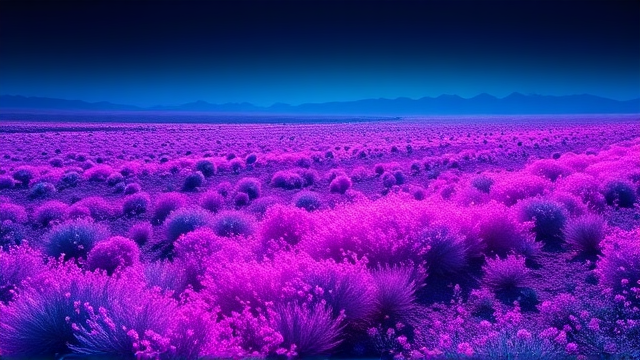Rare Winter Rains Cause Bloom in Chile's Atacama Desert
In a profound ecological event that underscores the delicate and volatile interplay between climate systems and the planet's most fragile ecosystems, the Atacama Desert—a vast, arid expanse in northern Chile long recognized as one of the driest places on Earth—has undergone a startling transformation. Following unusually heavy and persistent winter rains, a dormant seed bank, lying in wait for years and sometimes decades beneath the hyper-arid soil, has erupted into a spectacular, sprawling sea of fuchsia and purple wildflowers, primarily the iconic 'pata de guanaco' and 'añañucas'.This phenomenon, known locally as the 'desierto florido' or 'flowering desert,' is a breathtaking visual spectacle, but it is also a powerful scientific and environmental signal, a living laboratory revealing the profound impacts of climatic anomalies. The Atacama typically receives less than a few millimeters of precipitation annually, its landscape more akin to Mars than to a fertile plain, but this year, a complex shift in Pacific Ocean temperatures and atmospheric rivers delivered a deluge that penetrated the hard, crusted earth, triggering a synchronized germination on a scale not seen for nearly a decade.For biologists like Dr. Andrea Loayza of the University of La Serena, this is not merely a beautiful anomaly but a critical research opportunity; her team is on the ground, meticulously documenting the bloom's intensity, species diversity, and the behavioral responses of pollinators, from native bees to specialized birds, who are experiencing a sudden, fleeting bounty.However, this vibrant tapestry is shadowed by significant ecological concerns. The sudden influx of moisture and rapid plant growth can disrupt the highly specialized adaptations of the desert's endemic species, which are engineered for survival in extreme drought.Invasive plant species, often more aggressive and water-hungry, can hitch a ride on these unusual weather patterns, outcompeting the native flora and permanently altering the soil composition and hydrological cycles. Furthermore, the bloom attracts a surge of tourists, drawn by the otherworldly sight, whose foot traffic and off-road vehicles can compact the soil and crush the very life they come to admire, leaving lasting scars on the landscape long after the flowers have withered.This event must be viewed through the broader, more ominous lens of global climate change, where historical weather patterns are becoming increasingly unpredictable. The increased frequency and intensity of such 'rare' rainfall events in hyper-arid regions could represent a fundamental shift, pushing these ecosystems beyond their evolutionary tipping points.The Atacama's bloom is thus a paradox—a breathtaking gift of nature that also serves as a stark, colorful warning. It is a vivid demonstration of life's tenacity, yet it forces us to confront the unintended consequences of a changing climate, where even the most resilient and starkly beautiful environments on Earth are rendered vulnerable, their futures hanging in a precarious balance between ephemeral beauty and long-term ecological disruption.
Latest News
In a development that feels as monumental as the first time humanity grasped the orbital mechanics that would one day take us to Mars, a cadre of international
5 hours ago0 comments
In the grand, unfolding narrative of Africa's energy future, a quiet but profound struggle is taking place, one that pits the seductive allure of quick-fix
6 hours ago3 comments
The persistent longevity gap between the sexes, a phenomenon observed not just in our own species but across a remarkable spectrum of mammalian life, from the
8 hours ago3 comments
The skies above Hong Kong performed a spectacular act of atmospheric theater earlier this month, presenting residents of Tsing Yi with a vision so ethereal it
13 hours ago5 comments
In a landmark study emerging from Spain, a nuanced and more intelligent iteration of the celebrated Mediterranean diet has demonstrated a staggering 31%
14 hours ago5 comments
It’s a quiet truth, one that emerges not in the stark light of a clinic but in the whispered confessions of daily life: the weight of depression isn't a
14 hours ago3 comments
For decades, the very first moment of photosynthesis—the miraculous process that powers nearly all life on Earth—has held a secret, a fundamental asymmetry
14 hours ago3 comments
The very ground beneath California, long accepted as a precarious but predictable neighbor, is now revealing a more volatile and terrifying personality.
15 hours ago4 comments
It’s quiet here...Start the conversation by leaving the first comment.
